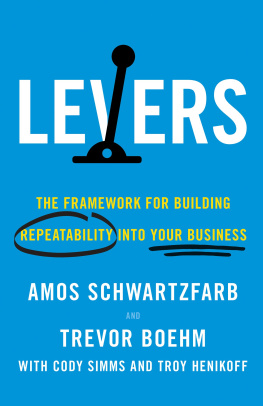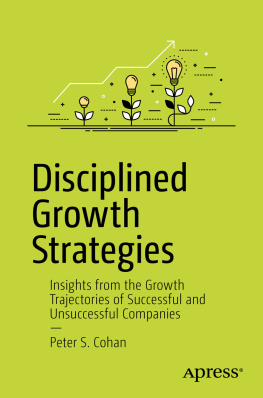Copyright 2022 by Matt Hulett
All illustrations copyright 2022 by Matt Hulett, unless otherwise credited
All rights reserved. No part of this book may be reproduced, stored in a retrieval system or transmitted, in any form or by any means, without the prior written consent of the publisher or a licence from The Canadian Copyright Licensing Agency (Access Copyright). For a copyright licence, visit accesscopyright.ca or call toll free to 1-800-893-5777.
Every reasonable effort has been made to contact the copyright holders for work reproduced in this book.
Some names and identifying details have been changed to protect the privacy of individuals.
The views and opinions expressed in this book are those of the author and do not necessarily reflect the opinions, official policy, or position of any organization.
Cataloguing in publication information is available from Library and Archives Canada.
ISBN 978-1-77458-154-4 (hardcover)
ISBN 978-1-77458-155-1 (ebook)
ISBN 978-1-77458-250-3 (audiobook)
Page Two
pagetwo.com
Edited by Scott Steedman
Copyedited by Christine Lyseng Savage
Proofread by Alison Strobel
Jacket design by Jennifer Lum with Peter Cocking
Interior design and illustrations by Setareh Ashrafologhalai
Indexed by Donald Howes
Printed and bound in Canada by Friesens
Ebook by Bright Wing Media
Distributed in Canada by Raincoast Books
Distributed in the US and internationally by Macmillan
22 23 24 25 26 5 4 3 2 1
startupwhisperer.com
Introduction
R emember the 2008 action movie Taken? It stars the gruff Irish tough guy Liam Neeson, whose seventeen-year-old daughter has been kidnapped by a band of Albanian smugglers. OK , it wasnt a classic. But theres one very famous scene, when Neesons character threatens the lead kidnapper in a manner that etched its words into my brain. How can we forget these lines: I dont know who you are. I dont know what you want. If you are looking for ransom, I can tell you I dont have money... but what I do have [is] a very particular set of skills. Skills I have acquired over a very long career. Skills that make me a nightmare for people like you.
When I think back on my career, I hear those words in my head. Probably because I have taken on jobs and companies that most operators would have avoided. Messy jobs: the turnarounds, the pivots, jobs where you have to go in and make an impact. Fast. So I do feel like a man with a particular set of skillsskills that most of my peers dont have.
Im always brought into situations where something is broken and needs to be fixed. Maybe the company is in the wrong business overall, or the strategy is bador really, maybe everything is just bad. Not enough capital, or the CEO and founder is the wrong fit. Whatever it is, somethings wrong, and Im brought in to fix it.
Im not sure why that is. I have no desire to seek therapy or pursue my Jungian archetypes. Maybe I did something in a previous life that set me on this path. Maybe Im paying for some forgotten sin. Id rather believe that Im drawn to messy situations because of my upbringing. I was brought up in a divorced family and was made the man of the house at a very young age. Getting a lot of responsibility all at once thrusts you into triage mode, meaning youre always looking at the opportunity, assessing the situation, designing a plan of action, and then executing it. In the military experience its called an OODA loop: Observe, Orient, Decide, and Act. I have built my own version of the OODA loop to unlock value in companies, or at least to determine if there is value to be unlocked.
I have worked in public and private technology companies for the last thirty years. I have worked in so many different industries and with so many different business models that I have built a knack for pattern recognition. I feel the need to discuss how my career has ping-ponged from many different types of companies because I think it can help others who are striving for success. I have experience growing businesses from zero to a billion dollars in gross sales, multiple wins transforming poor-performing companies to double-digit growthand I have screwed up along the way too. I will be open about those wins and losses. This book was written with a lifetime of blood, sweat, and tears that business leaders can learn from.
When I started taking over companies as the CEO or president, there was no instruction manual I could read to show me how to fix or transform them. Most of the books I could get my hands on talked about optimizing for value. This was code for cutting costs. If you read between the lines, cutting operating expenses was pretty much the only strategy they recommended. I could never figure out why there were not more books written about how to change your market position.
You can change your market position. You can pivot, turn around, and/or refocus your growth business. You can change your course. You can change your destiny. The business world is not Greek theaternothing is predestined. I truly believe that you can drive a new destiny for your business and for your career.
There are many famous examples, some quite recent. For example, a game company called Slack pivoted to the chat and messaging product we all know and love today. There are many other examples of early-stage companies pivoting their focus. But can an existing business reimagine itself? Absolutely. Think about Apple and its amazing transformations after Steve Jobss return in 1996: a stream of product advancements, starting with the iMac, the iPod, the iPhone, and so many more.
Can You Turn a Dog Into a Star? Yes!
The Boston Consulting Group has a well-known two-by-two (22) growth matrix that has been at the forefront of my career. Each box on the matrix determines the appropriate capital allocation strategy. I didnt even know that it was possible to change a business from one square in the matrix to another until I got call after call asking me to do just that. These calls typically start out with, Hi, Matt. I have an asset with a little bit of hair on it. Growth has slowed. The team isnt innovating and hasnt really figured out what to do. The competition is starting to heat up, and we investors are getting anxious. Interested? In BCG terms, I called this, Will you turn my dog into a star?
Can You Turn a Dog Into a Star?

Boston Consulting Group, Growth Share Matrix, 1968
Let me explain, with reference to the diagram. Typically, neither a dog nor a cash cow is growing. A question mark doesnt have high market share, but its growing fast. Alas, everyone wants to be a star. And to be clear, not every business can be turned around. Some are very good lifestyle businesses, but theyre never going to become stars. And some businesses are just too antiquatedturning them around would require too much capital.
So how can you turn your business into a high-market-share, high-growth company? I felt compelled to write this book to try and answer that question, and because I couldnt find any resources for myself. The other primary motivator is to provide an inexpensive resource to give back to the entrepreneur and business community in a way that encourages us to include more diversity. Creating lower barriers for a broader array of business and product thinkers to thrive is just a net good thing for the planet.
My Unique Journey
Before I lay out my philosophy on unlocking value, Id like to first give you a sense of the diversity of businesses I have been involved with in my career. I havent stuck with one vertical or business model over my thirty-plus years. While perhaps not the smartest thing to do from a career perspective, this has certainly given me an outlook that ranges from consumer to enterprise, from freemium to SaaS (software as a service) to DTC (direct to consumer). I have seen a lot.
Next page







